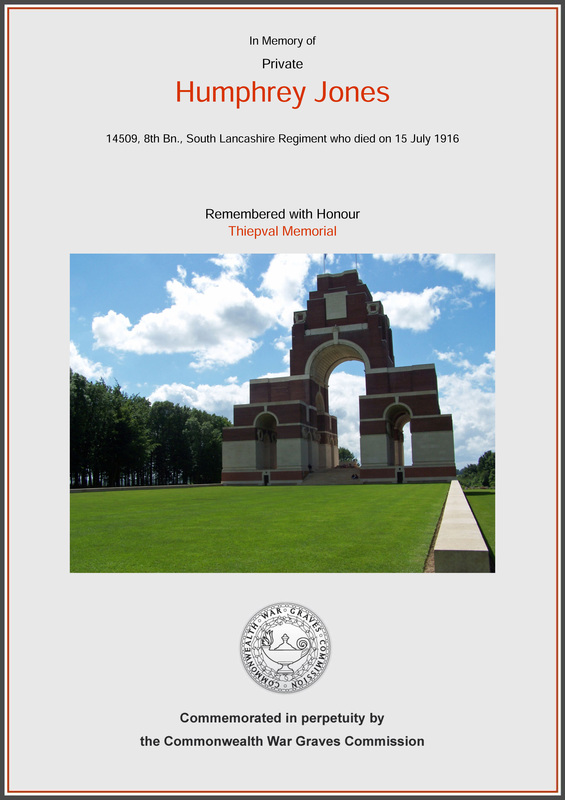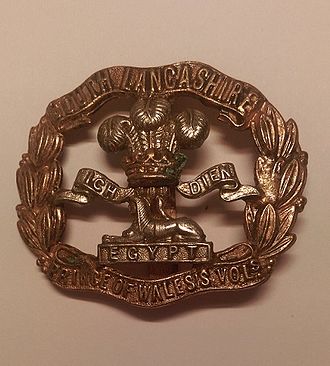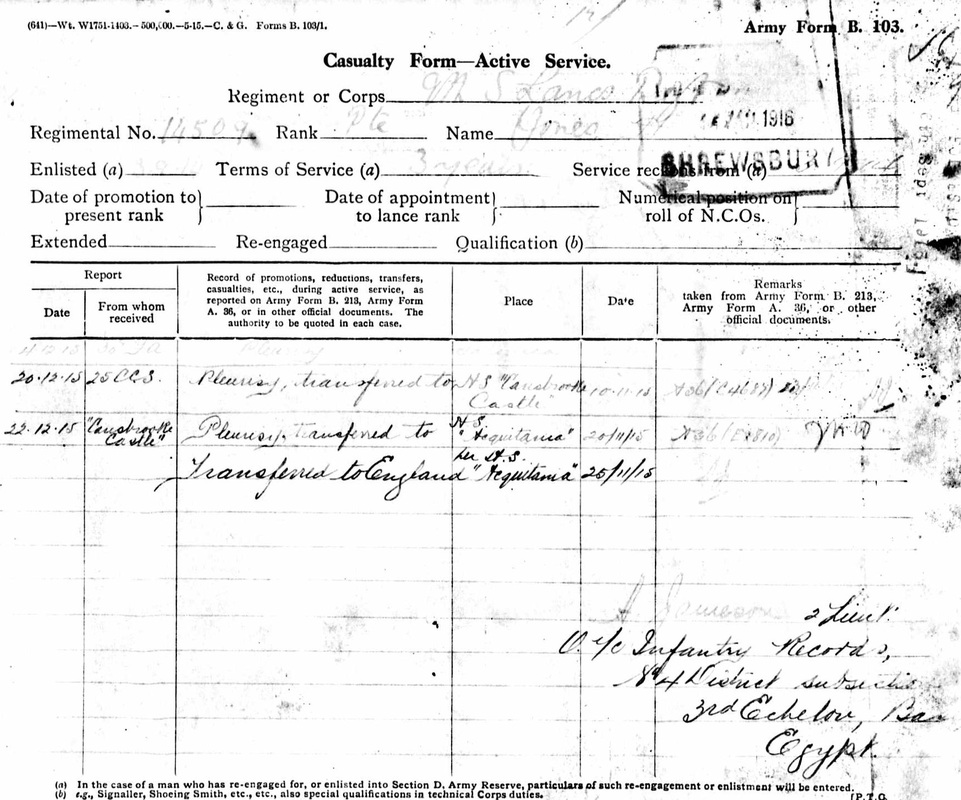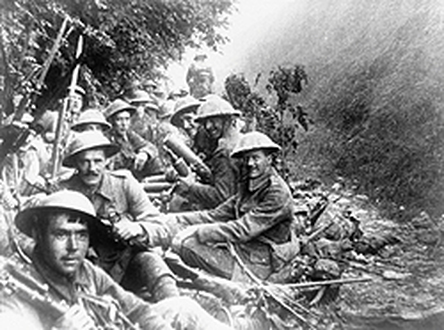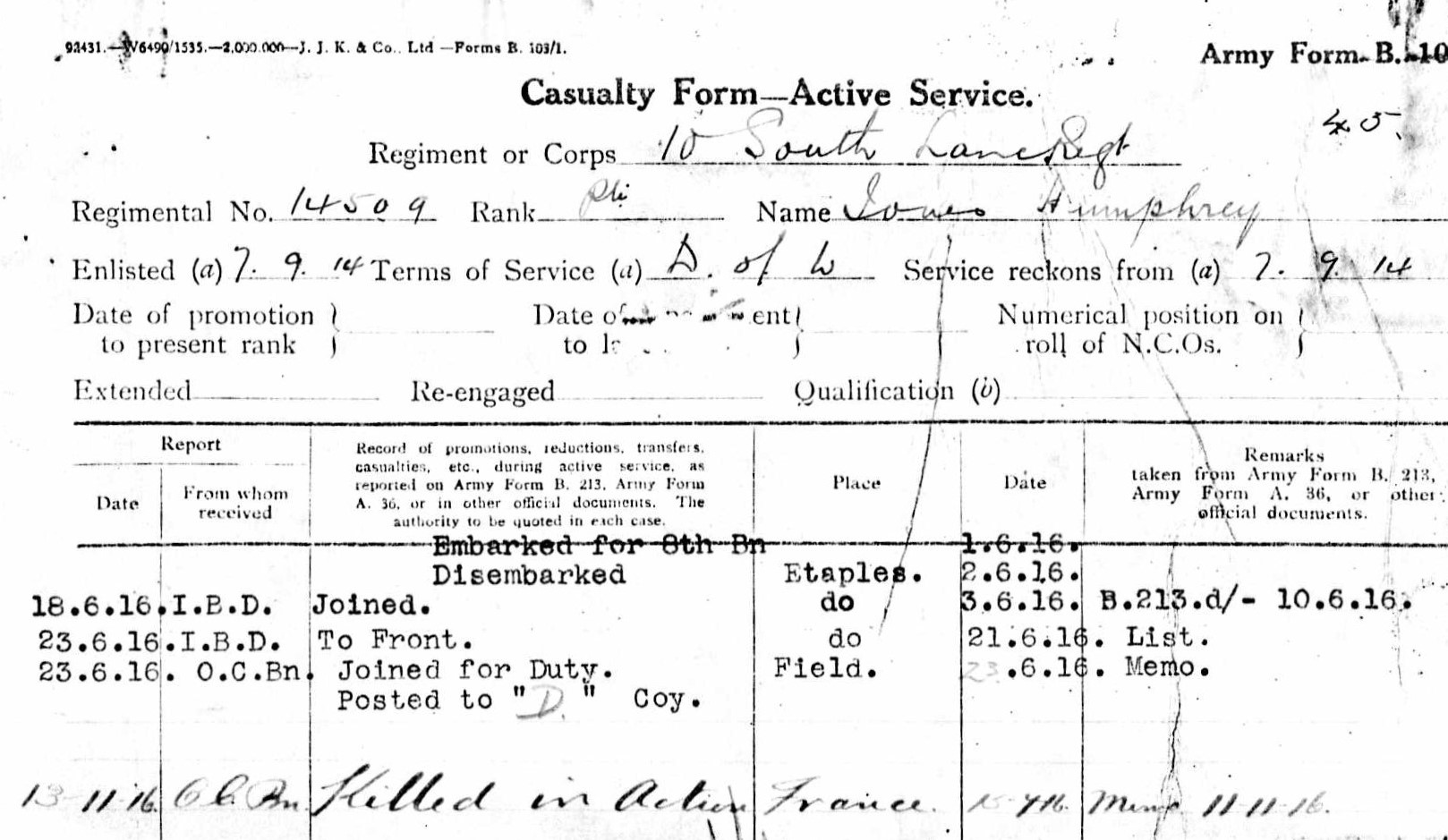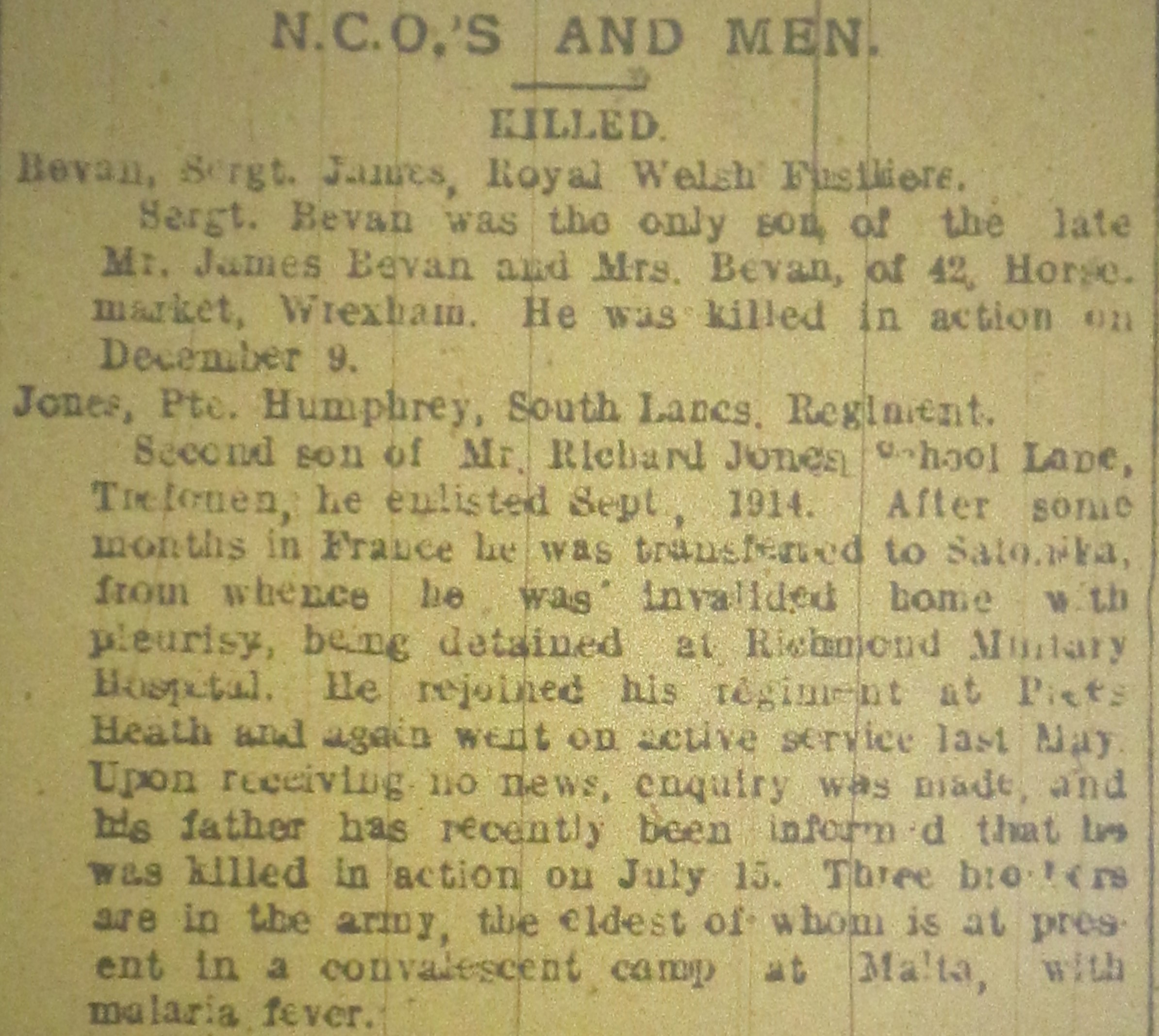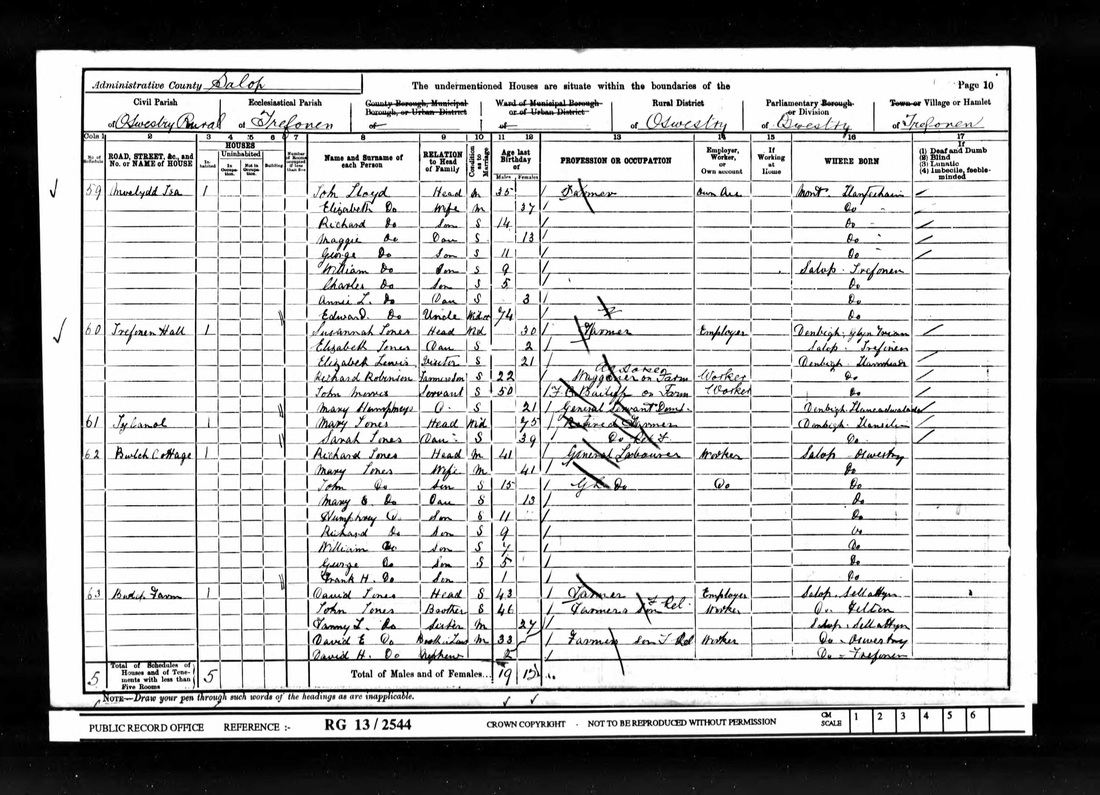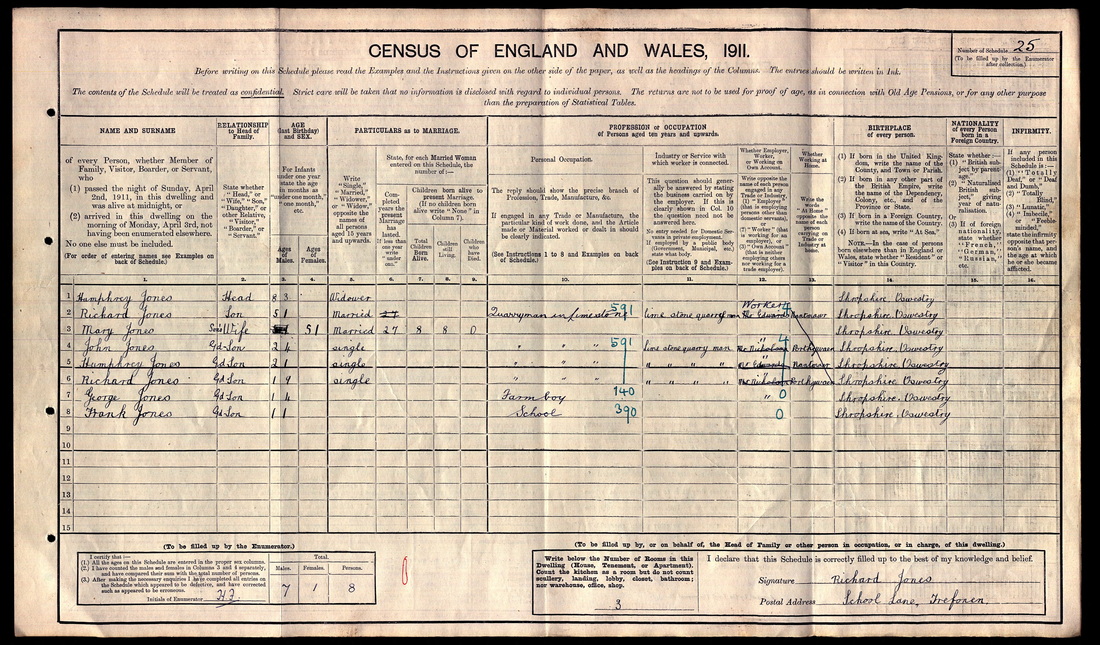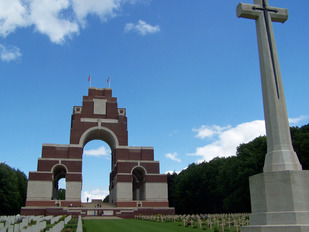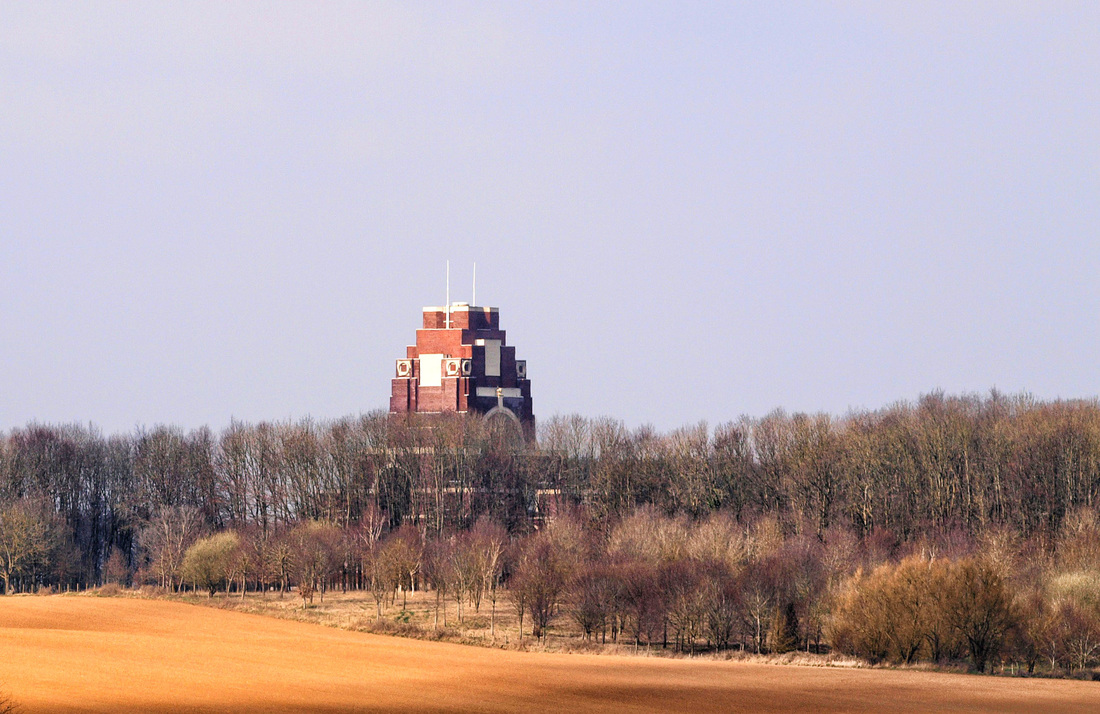Humphrey Jones
|
Introduction
Humphrey Jones was born in 1890 one of the eight children of Richard and Mary Jones. In the 1911 census he was living with his Grandfather, Mother and Father and three of his brothers in School Lane, Trefonen. At this time he was 21 years of age and working as a quarryman in Nantmawr for a Mr Edwards. Humphrey was quick to join up shortly after war was declared. Three of his brothers also joined the army as can be seen by the newspaper cutting lower down which records Humphreys death. |
Military Record including Regimental and Battalion information
|
He enlisted to fight on 9th September 1914 at Abertridwr as a member of the Prince of Wales Volunteers and was assigned to the 10th Battalion South Lancashire Regiment.
It would seem from his war record that still has a few pages that are readable that he initially landed in France with the 9th Battalion on September 8th 1915 and then moved south sailing from Marseilles in November to Salonika, Greece. According to his medical records (see below) he was taken ill with pleurisy which must have been almost as soon as he arrived as by the end of the month he had been returned to England via RMS Carisbrooke Castle and RMS Aquitania which were both used as troop and hospital ships in the Mediterranean at the time. |
During and after his illness he was assigned to the 10th Battalion South Lancashire's who were a reserve Division training and based at Prees Heath. It was whilst here that Private Humphrey Jones overstayed his pass till 11.30pm on one occasion for which he was fined 5 days pay.
He returned to active service in France from the 2nd June 1916 with the 8th Battalion landing at Boulogne and remaining at Etaples (The Bull Ring) for three weeks. The Bull Ring as it was known was an infamous training camp for many of those British soldiers sent to France and in 1917 witness to a serious mutiny. (click on the link below to discover more)
http://libcom.org/history/articles/etaples-mutiny-1917
On the 21st June Private Humphrey Jones was sent to the front in D Company of the 8th Battalion South Lancashire Regiment to prepare for action in what was to be the bloodiest day in British military history, the first day of the Battle of the Somme.
http://libcom.org/history/articles/etaples-mutiny-1917
On the 21st June Private Humphrey Jones was sent to the front in D Company of the 8th Battalion South Lancashire Regiment to prepare for action in what was to be the bloodiest day in British military history, the first day of the Battle of the Somme.
The Battalion War Diaries record that on the 14th and 15th July D Company was engaged in trying to push towards Ovillers but was unable to do so and was pinned down. It was during this time that Humphrey Jones was to lose his life.
Census data
Historical Information
On 1 July 1916, supported by a French attack to the south, thirteen divisions of Commonwealth forces launched an offensive on a line from north of Gommecourt to Maricourt. Despite a preliminary bombardment lasting seven days, the German defences were barely touched and the attack met unexpectedly fierce resistance. Losses were catastrophic and with only minimal advances on the southern flank, the initial attack was a failure. In the following weeks, huge resources of manpower and equipment were deployed in an attempt to exploit the modest successes of the first day. However, the German Army resisted tenaciously and repeated attacks and counter attacks meant a major battle for every village, copse and farmhouse gained. At the end of September, Thiepval was finally captured. The village had been an original objective of 1 July. Attacks north and east continued throughout October and into November in increasingly difficult weather conditions. The Battle of the Somme finally ended on 18 November with the onset of winter.
In the spring of 1917, the German forces fell back to their newly prepared defences, the Hindenburg Line, and there were no further significant engagements in the Somme sector until the Germans mounted their major offensive in March 1918.
The Thiepval Memorial, the Memorial to the Missing of the Somme, bears the names of more than 72,000 officers and men of the United Kingdom and South African forces who died in the Somme sector before 20 March 1918 and have no known grave. Over 90% of those commemorated died between July and November 1916. The memorial also serves as an Anglo-French Battle Memorial in recognition of the joint nature of the 1916 offensive and a small cemetery containing equal numbers of Commonwealth and French graves lies at the foot of the memorial.
The memorial, designed by Sir Edwin Lutyens, was built between 1928 and 1932 and unveiled by the Prince of Wales, in the presence of the President of France, on 1 August 1932 (originally scheduled for 16 May but due to the death of French President Doumer the ceremony was postponed until August).
The dead of other Commonwealth countries, who died on the Somme and have no known graves, are commemorated on national memorials elsewhere.
On 1 July 1916, supported by a French attack to the south, thirteen divisions of Commonwealth forces launched an offensive on a line from north of Gommecourt to Maricourt. Despite a preliminary bombardment lasting seven days, the German defences were barely touched and the attack met unexpectedly fierce resistance. Losses were catastrophic and with only minimal advances on the southern flank, the initial attack was a failure. In the following weeks, huge resources of manpower and equipment were deployed in an attempt to exploit the modest successes of the first day. However, the German Army resisted tenaciously and repeated attacks and counter attacks meant a major battle for every village, copse and farmhouse gained. At the end of September, Thiepval was finally captured. The village had been an original objective of 1 July. Attacks north and east continued throughout October and into November in increasingly difficult weather conditions. The Battle of the Somme finally ended on 18 November with the onset of winter.
In the spring of 1917, the German forces fell back to their newly prepared defences, the Hindenburg Line, and there were no further significant engagements in the Somme sector until the Germans mounted their major offensive in March 1918.
The Thiepval Memorial, the Memorial to the Missing of the Somme, bears the names of more than 72,000 officers and men of the United Kingdom and South African forces who died in the Somme sector before 20 March 1918 and have no known grave. Over 90% of those commemorated died between July and November 1916. The memorial also serves as an Anglo-French Battle Memorial in recognition of the joint nature of the 1916 offensive and a small cemetery containing equal numbers of Commonwealth and French graves lies at the foot of the memorial.
The memorial, designed by Sir Edwin Lutyens, was built between 1928 and 1932 and unveiled by the Prince of Wales, in the presence of the President of France, on 1 August 1932 (originally scheduled for 16 May but due to the death of French President Doumer the ceremony was postponed until August).
The dead of other Commonwealth countries, who died on the Somme and have no known graves, are commemorated on national memorials elsewhere.
click on the link below for further information
www.cwgc.org/find-a-cemetery/cemetery/80800/THIEPVAL%20MEMORIAL
www.cwgc.org/find-a-cemetery/cemetery/80800/THIEPVAL%20MEMORIAL
